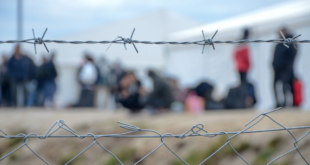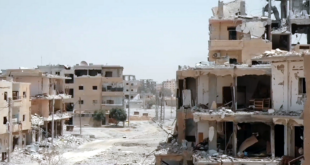Since the innovation in high-tech, the means of warfare are evolving, the weaponry of war is changing, and new strategies are developing. The Ukraine-Russia war has highlighted – new trends in warfare. It is the largest war in Europe since 1945. The war has shattered all the illustrations, such as, that the modern war would be constrained to counterinsurgency campaigns or evolve toward low-casualty struggles in cyberspace.
In contrast, the war triggered a new kind of high-intensity war that is far different from the illustrations that were accompanied by wars. The new war combines leading-edge technology on the industrial scale that is manufactured by -civilian, allies, and private firms used for the killing of human masses on a large scale. One can be sure that autocratic regimes are studying how to gate an edge in any upcoming skirmishes. Instead of recoiling the deaths and destruction, liberal societies must recognize the fact that war between industrialized states in all its prospects is real and start preparing for that.
The destruction of infrastructure, the killing of unarmed people, and the ruin of civilian life in Ukraine hold three big lessons. The first lesson is that the battlefield is more transparent than it was before, at any time in history. In the age of satellites and drone fleets, forget about the old maps and binocular microscopes; all things are censored from space. Inexpensive and everywhere, they yield data for processing by ever-improving logarithms that can pick out needles from the haystacks: the mobile signals of a general standing on the front line or the contents from the camouflaged tank in the jungle. This information can be passed via satellite to any soldier standing on the front line or used to aim artillery and rockets with unprecedented precision and range.
Such a high quality of transparency means that future wars will be centered on communication and information. In this age of war, the priorities will be to detect the enemy before they spot you; disturb their means of communication lines used for sending data in the field; blind their sensors, whether satellites or drones, whether by using cyberattacks or by old methods of explosion. While evolving methods of war, the soldiers will also adopt new methods of hiding, staying, and fighting. The armies that failed to invent high-tech or fail to develop new doctrines will be overwhelmed by those that do.
In the current era of artificial intelligence, the second lesson is that even the war in the high-tech era may still contain hundreds of thousands of individuals and millions of machines and ammunition. The number of causalities in Ukraine has been severe; the ability to locate targets and hit them precisely needs more humans, which is soaring because of intensive fighting and deaths on the battleground. To defend themselves, troops have sifted mountains of mud to dig trenches similar to those of World War I and II. The consumption of ammunition and equipment is staggering: in a year of war, Russia has fired 10 million shells; Ukraine loses 10,000 drones per month. At the same time, to help its counter-offensive operation, Ukraine is demanding from its allies’ old-school cluster ammunition. In the long run, technology may alter the requirement for the physical mass of individuals on the battlefield, and it would be filled by robots.
On one occasion, General Mark Miley, America’s most senior soldier, predicted that in the coming next 10-15 years, a major part of advanced forces would be robotics. For example, think of pilotless aircraft and crewless tanks, yet armies need to fight in this decade or the decades to come. Keeping that in mind, while building stockpiles and transforming industries to make hardware on a large scale, armies still required that their armies had the manpower to fight in the battle. A NATO summit on the 11th and 12th of July vivid showed that Western powers are inclined toward the trends of the Cold War: pledge of 2 percent of GDP for NATO defense spending, notion of collective security, and confirmation of financial, logistical, and ammunition support for Ukraine, an Iron curtain of the 21st century.
The third lesson, the one that was much applied in the 20th century, indicates that the boundaries of the big wars are wide and indistinct. For instance, the United States’ wars in Afghanistan and Iraq were different as they were fought by small professional armies that imposed a burden on the civilian population. In contrast, the war between Moscow and Ukraine sucked the civilian population as war victims, over 9000 people died including participants: For example, a grandmother sitting in the province of Ukraine can guide the artillery fire using her smartphone. And beyond the old defense classical-industrial complex of mercenaries, a new cohort of Private Military Corporations (PMCs) has proved crucial. Ukraine’s battlefield software is held on big tech’s cloud servers abroad; Finnish companies provide targeting data and American ones’ satellite communications. Moreover, having a large network of allies, Ukraine was supported through supply and various commitments, for example, sanctions and embargo on Russian trade.
Hence, the overall discussion implies that every war is not the same; as technology evolves, the modes of warfare are also transforming. To fight a war, you need allies that provide ammunition, weaponry, technology, and financial support, such as friendly neighbors or big powers that supported Ukraine throughout the war. Historically, since the evaluation of man, the trends of warfare have been evolving. In human history, there are various waves of war: the primitive war fought with blowguns and swords; industrialization introduced machinery in warfare; and the Gulf War introduced new trends in war such as long-range missiles, lethal-fire use, and precision-guided missiles.
Every war in the past has had its trends. However, the war in Ukraine has introduced some new lethal and devastating trends. For instance, pilotless drones, communication from satellites to hit with precision, and highly lethal ammunition are used. The advancement of technology has impacted the trends of war, because of the quest for extension of range of weapons, the volume and precision of fire, and the transparency at the battlefield. Those armies that do not acquire such advancements will face failure in future wars. As Toffler said: “Armies that could reach further, hit harder, and get there faster usually won, while the range-restricted, less well-armed, and slower armies lost. For this reason, a vast amount of human creative effort has been poured into extending the range, increasing the firepower, and accelerating the speed of weapons and armies.”
 Eurasia Press & News
Eurasia Press & News




